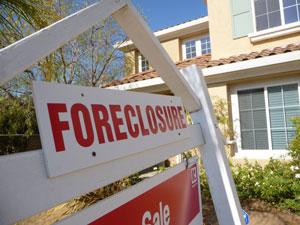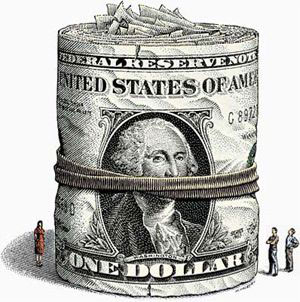
Summary:
Explanations for the current mortgage meltdown fail to mention how the wave of foreclosures resulting from the concentration of subprime loans in predominantly nonwhite neighborhoods actually played a critical role in setting the Wall Street financial crisis in motion. Placing the phenomenon of racially concentrated subprime loans, mortgage defaults, and foreclosures within the historical context of housing discrimination allows us to see that the crisis today finds its roots in residential segregation. The housing crisis therefore must be considered as part of a continuum of housing discrimination and dual credit markets, which provides the necessary conditions for predatory lending to take hold. Future fair housing safeguards for financially vulnerable residents of segregated neighborhoods can only be achieved by viewing financial processes such as securitization within the broader context of housing discrimination.
 Abundant research shows how the current wave of foreclosures from unsustainable subprime mortgage products delivered a devastating loss of wealth to non-white neighborhoods across the U.S. Accordingly, the case against racially concentrated subprime lending demonstrates not only how the inequitable effects of the mortgage meltdown is concentrated in non-white communities, but also how these inequities remain rooted in the long-standing patterns of housing discrimination that shaped segregated space — the essential condition for a racialized concentration of subprime lending to take place. Racially defined residential space should be seen as “ground-zero” for the foreclosure crisis, and remains an important piece of evidence in building the case against predatory lending. The task before us is to clearly articulate how the uneven effects of subprime lending, a seemingly place-less and colorblind market phenomenon, continues the intergenerational practice of housing discrimination in the very neighborhoods initially shaped by race-based housing policies.
Abundant research shows how the current wave of foreclosures from unsustainable subprime mortgage products delivered a devastating loss of wealth to non-white neighborhoods across the U.S. Accordingly, the case against racially concentrated subprime lending demonstrates not only how the inequitable effects of the mortgage meltdown is concentrated in non-white communities, but also how these inequities remain rooted in the long-standing patterns of housing discrimination that shaped segregated space — the essential condition for a racialized concentration of subprime lending to take place. Racially defined residential space should be seen as “ground-zero” for the foreclosure crisis, and remains an important piece of evidence in building the case against predatory lending. The task before us is to clearly articulate how the uneven effects of subprime lending, a seemingly place-less and colorblind market phenomenon, continues the intergenerational practice of housing discrimination in the very neighborhoods initially shaped by race-based housing policies.
 Here I offer two suggestions for building the fair housing case against predatory lenders, and for stabilizing communities under stress. First, fair housing litigation and advocacy can benefit from contextualizing predatory lending within the historical record of racialized housing, thereby linking the economic catastrophes brought on by the subprime mortgage meltdown to past episodes of racially disparate market action. Second, fair housing advocates can use this evidence to justify improvements to federal mortgage reporting requirements that can lead to more effective monitoring of financial institutions. The improved lender monitoring will aid in demonstrating how the spatially and racially concentrated loss of homeownership seen today, represents a continuum of housing discrimination in segregated residential space. In turn, practical and expedited solutions for crisis relief can be targeted to those places and populations most affected by the on-going financial crisis.
Here I offer two suggestions for building the fair housing case against predatory lenders, and for stabilizing communities under stress. First, fair housing litigation and advocacy can benefit from contextualizing predatory lending within the historical record of racialized housing, thereby linking the economic catastrophes brought on by the subprime mortgage meltdown to past episodes of racially disparate market action. Second, fair housing advocates can use this evidence to justify improvements to federal mortgage reporting requirements that can lead to more effective monitoring of financial institutions. The improved lender monitoring will aid in demonstrating how the spatially and racially concentrated loss of homeownership seen today, represents a continuum of housing discrimination in segregated residential space. In turn, practical and expedited solutions for crisis relief can be targeted to those places and populations most affected by the on-going financial crisis.
Building the fair housing case against predatory lenders remains compli cated by explanations that frame the cause of the mortgage meltdown as complex financial processes removed from social decisions, or as irresponsible consumer action. Missing from this reasoning, of course, is acknowledging the racialized predatory lending that took place in predominantly non-white neighborhoods by subprime lenders supported by Wall Street investment. Here the significance of race-based market manipulation cannot be overstated. Holding financial institutions accountable for the social and financial damage brought by the default of rapidly unsustainable mortgages requires identifying the specific market practices that made racially segregated space vulnerable to predatory capital extraction. Connecting these historical practices to subprime lending is surprisingly very simple, but because this link, developed over decades of time through the formative years of the modern real estate and mortgage industry, is easily overlooked. More often, the link is simply explained away as an epiphenomenon of competitive supply and demand markets.
cated by explanations that frame the cause of the mortgage meltdown as complex financial processes removed from social decisions, or as irresponsible consumer action. Missing from this reasoning, of course, is acknowledging the racialized predatory lending that took place in predominantly non-white neighborhoods by subprime lenders supported by Wall Street investment. Here the significance of race-based market manipulation cannot be overstated. Holding financial institutions accountable for the social and financial damage brought by the default of rapidly unsustainable mortgages requires identifying the specific market practices that made racially segregated space vulnerable to predatory capital extraction. Connecting these historical practices to subprime lending is surprisingly very simple, but because this link, developed over decades of time through the formative years of the modern real estate and mortgage industry, is easily overlooked. More often, the link is simply explained away as an epiphenomenon of competitive supply and demand markets.
The link can be summarized as follows: During the 1900s, community builders and the National Association of Real Estate Boards (NAREB), actively promulgated the use of racially restrictive covenants limiting the purchase of newly constructed homes to whites. The covenants were used as a way to create value and demand for new suburban residential developments. The NAREB also guided the development of appraisal techniques and practices that conditioned property values upon the racial characteristics of neighborhood residents. When NAREB members were appointed to draft FHA underwriting guidelines for New Deal home financing programs, racial restrictions became a formal condition of mortgage credit, and fueled the formation of the homogeneous residential suburbs during the post-war housing boom.
 New Deal FHA guidelines also prohibited, or “redlined,” access to credit in neighborhoods with non-white residents. The subsequent decline in redlined property values made inner-city neighborhoods vulnerable to urban redevelopment programs that assembled de-valued property for transfer to commercial developers. The forced exodus of non-white residents from redevelopment zones to areas without racially restricted covenants created new racial boundaries for residency, and led to a second wave of mortgage redlining during the period of 1950-1980. By this time, racialized residential boundaries were firmly embedded in the social and physical landscapes of our cities.
New Deal FHA guidelines also prohibited, or “redlined,” access to credit in neighborhoods with non-white residents. The subsequent decline in redlined property values made inner-city neighborhoods vulnerable to urban redevelopment programs that assembled de-valued property for transfer to commercial developers. The forced exodus of non-white residents from redevelopment zones to areas without racially restricted covenants created new racial boundaries for residency, and led to a second wave of mortgage redlining during the period of 1950-1980. By this time, racialized residential boundaries were firmly embedded in the social and physical landscapes of our cities.
Federal urban policy, and private implementation of said policy by the real estate industry, effectively redirected the flow of capital towards predominantly white suburban residential development. Concomitantly, these race-based market interventions shaped segregated space, and created credit-starved neighborhoods now vulnerable to subprime and predatory lending.
When intensive bank deregulation shifted the risk traditionally associated with lending in segregated space to Wall Street via securitization, the rush was on. During the period 2003-2006, data from the Home Mortgage Disclosure Act (HMDA), revealed an intense concentration of unsustainable subprime loans in previously redlined areas, a market phenomenon now referred to as “reverse redlining.” To no one’s surprise, mortgage default and foreclosure rates also mirror subprime loan concentrations in redlined space. Accordingly, race remains a salient factor in understanding the current housing crisis as it played a central role in triggering the wave of foreclosures that eventually froze Wall Street credit markets.
 Making the connection between financially vulnerable segregated space, and the predatory lending practices of today, exposes the inadequacies of federal financial monitoring policies designed to keep discriminatory mortgage lending practices in check. Lender monitoring currently takes place via the Community Reinvestment Act (CRA), which discourages redlining by assessing a financial institution’s record of helping to meet the credit needs of its entire community, including low- and moderate-income neighborhoods; and HMDA, which mandates lenders to report data regarding loan originations, loan pricing, loan purchases, and applicant demographics. Because these monitoring practices failed to detect in advance, the disparate lending practices seen today in segregated space, connecting the history of housing discrimination to the current wave of foreclosures occurring in non-white communities, becomes the starting point for justifying changes to the federal monitoring policy.
Making the connection between financially vulnerable segregated space, and the predatory lending practices of today, exposes the inadequacies of federal financial monitoring policies designed to keep discriminatory mortgage lending practices in check. Lender monitoring currently takes place via the Community Reinvestment Act (CRA), which discourages redlining by assessing a financial institution’s record of helping to meet the credit needs of its entire community, including low- and moderate-income neighborhoods; and HMDA, which mandates lenders to report data regarding loan originations, loan pricing, loan purchases, and applicant demographics. Because these monitoring practices failed to detect in advance, the disparate lending practices seen today in segregated space, connecting the history of housing discrimination to the current wave of foreclosures occurring in non-white communities, becomes the starting point for justifying changes to the federal monitoring policy.
Housing advocates should now push for three broad changes to federal monitoring that can improve access to fair credit and fair housing. First, expand HMDA reporting requirements to keep pace with industry innovations. The list of lenders required to report should now include all financial institutions and their affiliates that generate loans for securitization and eventual sale on Wall Street. Second, also, expand HMDA reporting to include data on borrower interest rates, credit scores, loan reset periods, balloon payments, adjustable rate mortgage margins and indices, and loan product underwriting (e.g. stated income or low-documentation loans). This data will help identify racial and spatial concentrations of dangerous credit products that strip away home equity, and cause financial instability. Simply monitoring high-cost loans as the primary indicator of predatory lending fails to capture data on important loan characteristics that help identify abusive lending practices.
Finally, the third push should be for housing advocates to push for transparency and enforcement of loan modification reporting requirements imposed by federal bailout programs. Loan modifications are critical to stabilizing neighborhoods experiencing stress from concentrated subprime lending and mortgage foreclosures.
Proper reporting of loan modification activities remains essential to monitoring the actions of lenders and asset managers, who are unwilling to move quickly to modify unsustainable loans. When used with HMDA data on subprime lending and mortgage default data, the tracking of loan modification applications and outcomes, can help demonstrate disparate patterns of treatment by lenders. Thus, housing advocates can gain leverage against lenders by showing how the number of approved loan modifications in segregated space fails to keep pace with their mortgage foreclosure rates, thereby inhibiting federal efforts to stabilize communities in stress. Such leverage can be used to push these same lenders to remedy past practices by improving access to safe financing products designed for homebuyers in crisis neighborhoods. The resulting increase in homeownership opportunities will slow the pace of investors “bottom-feeding” on repossessed homes. This will expedite the rebuilding of communities with stable families and support networks, rather than encouraging investor-owned neighborhoods of unstable renters.
Keeping an innovative global credit market accountable for abusive lending practices is a process that relies upon public scrutiny for its effectiveness. Improving the data available for fair housing practitioners can be a valuable strategy in revealing disparate credit practices, advancing fair credit and fair housing enforcement, and act as a pre-emptive strike against dangerous profit taking from financially vulnerable communities in the future. These steps will go a long way in reversing the effects of the new global financial infrastructure now operating as a Plessy-type credit market that continues to separate and divide our communities.
Originally published by the Race Equity Project (REP), December 2009.

Comments
Sub-prime loans housing market bubble
I have never really thought about this entire scandal based on race but this article has changed my opinion on the issue. I knew that many of the foreclosures and loan defaults were due to unstable sub prime loans mainly given to minorities and people of color. I never related it to the area that they lived and weather or not it was a "white neighborhood" or not. This exposes the inequalities of federal financial monitoring policies designed to keep discriminating mortgage lending practices. Most of these loans were given to communities that had been previously red lined and these loan companies wanted to try to "reverse redlining" this process lead to giving loans that were unstable to poor people who were only paying interest on their loans which mention they were not paying anything off of the property. These rates are set really low to try to give incentives to sign then due to fluctuating rates they get screwed when it goes up and up and up. Many of these people lost their jobs and or got hours and wages cut. These were predatory practices and people were fooled by not getting the proper information on their loans. We need to fight for more laws in these practices to help the stability of the housing market and to help promote equality for loans to people of color.
PREDATORS!
This makes so much sense in the history of poverty and race. NO wonder they are so connected. Predatorial schemes of banks and government consistently shank the lower class minority groups. Banks should be giving a helping hand; the government should be protecting vulnerable consumers from mysteriously rotten loans. Once these loans turn into foreclosures a history, a legacy of financial depression follows. Banks should be regulated on who and how they target for loans. Misinformation is deception, and deception is stripping away humanity and replacing it with price tags!
Banks lead to the pop of the market bubble
This article got me thinking that banks not only swindled the minorities out of equal housing loans, but provided them with loans that they knew would cause even more finacial hardship. Banks have caused problems not only for minorities but for the entire nation. A few years ago when the economy was steadily growing; it was the banks that were loaning constructions companies money to build homes that were selling for $500,000 and up. Then couples would apply for a loan at a bank, the loan officers would tell the people that they could afford these new homes, they did not need money down. All they had to do was sign an adjustable rate mortage with a low interest rate. Then when the market bubble popped, they couldnt sell there home because there house was worth considerably less money and they had to forclose on their home. Yes this happened much more to the minority population; but the banks knew this would happen. They lined their pockets with our money; and were even given more of our money through the effect of the stimulus.
Circling Around
Subprime loans, predatory lending, and nonwhite foreclosures are all underlying contributions of the dominant culture and its White ideals. These travesties have plagued nonwhite groups repeatedly throughout history; however, our culture fails to realize or acknowledge it because of a lingering desire for White privilege and a suppression of racism. For the dominant culture, White power is either still sacred or suppressed; many White people deny racism and prefer to believe that the system is equal, justified, and that issues that arise from it are natural and are not consequential to social constructions. It is difficult to admit the continuation of racism, segregation, White superiority, and discrimination, but that is the first step to vanquishing it. We must realize that history has not transformed; we are still trapped and wreathed in inequality and injustice. It may be a less-extreme version (for instance, we did abolish slavery), but it is still significant nonetheless. We can even extend our contemporary circumstances to say we have a modern form of slavery; minorities continue to be oppressed and subjugated. We can even say mass incarceration is a form of slavery. Wacquant writes that we have taken African Americans out of slavery into prisons because we still see them as problematic and are fearful of making contact with them. Thus, the system is crucially flawed. Just because a few "model minorities" are successful and have survived White tyranny, doesn't constitute a meritocratic system. The evidence is utterly clear: past issues show a distinct correlation between nonwhite discrimination and segregation and foreclosures and predatory practices. Why do we ignore this? How can we deny such compelling evidence? We deny it and fail to monitor these injustices because they serve as a benefit to White privilege; it serves as a protective barrier between ancient tradition and progressive change. Our race-based market mirrors the dominant culture ideology. I also feel these practices are still permitted and tolerated because banks are given far too much freedom. And problems have risen in the past because of this freedom, so why haven't we done something? Why hasn't the government done something? The federal government too is apprehensive of change and the prospect of addressing deeply-rooted issues. Why? The government is predominantly White and those figures who are not White, don’t want to jeopardize their status and position. I think if people did stand up, especially Whites because for a White to relinquish their privileges and stand up next to their Black counter-parts and speak up against racial injustice is powerful, that would send an unavoidable message to others. Can you imagine a world not plagued by conformity, but one where everyone acted on their conscience? It would ultimately be incredibly inspiring to see such a world. Not that I'm not giving credit to those who already do utilize their voices for the greater good, but that more people should do it, namely those in position of power and consequence. Furthermore, we all must realize that what effects some of us, effects all of us. If we leave nonwhites to fend for themselves against corporation predators, it will eventually come around and oppress us. Didn't these foreclosures dramatically assist the recession? So, by oppressing minorities, we caused a devastating recession that currently wreaks havoc on us all. If we help others, that help might circle around and help us when we need it most. If we hadn't condoned predatory practices on nonwhites, we might not be in the mess we are in today.
We’re not equal, yet…
I feel that whites still believe that the oppression of minorities is not present and the contemporary system we’re in is equal. The first step to abolishing and getting rid of racism and prejudice is to acknowledge the unjustified issues of social construction. We have to recognize modern segregation, discrimination and white privilege. Foreclosures are affecting more minorities at a faster rate than anyone else in our society. The issue with modern minorities obtaining well paying jobs and having a higher stature than blacks and Hispanics is a mystery to me. I was under the impression that the recession affected every group in the country. Why are banks and business not helping the ones who need them the most? They’re in a position of power were they can make a difference in many minorities lives, but instead they’re increasing the rates on their homes which makes it impossible to afford. Is that injustice or white supremacy? They’re forcing minorities to move to areas were only minorities afford and elites in our society don’t want to live there. This kind of reminds me of block busting and red lining. This is why we’re seeing three or four families living in one home at a time.
comment:
The last time I drove down my neighborhood, another house has just been foreclosed. It is interesting because most people in my community, at least on my street are all minorities. I have noticed that the number of foreclosures around the area has increased over the last year. My dad, who works at a law firm who deals with loan modification and litigation expresses how minorities have been victimized for buying houses they cannot afford. Lenders pursued and sold them houses even though the income presented does not prove how one could pay for a high monthly mortgage. It is bothersome to think the statistics of foreclosures are predominantly nonwhite. Here, I feel that people of color are tricked and are taken advantage to buying a nice house in a suburb for example due to their vulnerability and need for acceptance to be included and be associated with the white-anglo saxon protestant, middle-class american family.